|
Paper 4
The Promenade Figure in English Regency Dancing
Contributed by Paul Cooper, Research Editor
[Published - 14th March 2014, Last Changed - 20th March 2021]
In previous articles we've reviewed the Allemande and Pousette figures in Regency ball rooms. In this article we'll look at another figure with a French name, the Promenade. We'll review how the figure was described in the dance manuals and consider the history of the figure and how it can be danced.
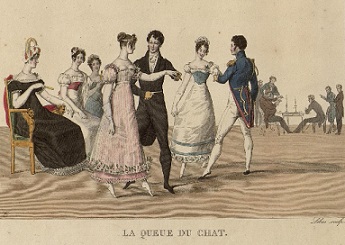
Figure 1. An 1821 image of a French promenading figure.
The Promenade is a couple-figure in which partners join hands and travel together around, across or within the set of dancers. It may involve a single couple, two couples, or all of the couples in the set. There are several different names for this figure but the concept is similar across all of them; it's sometimes referred to as La Course, La Queue du Chat or by the older English term Lead Arm-in-Arm.
Figure 1 shows a French promenading figure used in Quadrille dancing1. In this figure the couples join left hands, and the man leads the lady across the set into the opposite place. This figure is named La Queue du Chat, it literally translates as The Cat's Tail in reference to the curved route the dancers take in crossing a Quadrille Set and then sweeping back around to face into the square.
As with the Allemande and Pousette, the term Promenade entered English ball rooms in the late 1760s. It was first used in Cotillion dancing, appeared in English Country Dances from the mid 1770s, and lived on into the Quadrille dancing of the 1810s. As we discovered with the Pousette, the figure had previously existed in English Country Dancing under a different name; this hints at the possibility that the French adopted an English dance figure and that the English adopted the fashionable French terminology.
There are at least five Promenade embraces or holds that are documented in the historical sources:
- The man takes one of the lady's hands in his hand (typically left in left) and leads her somewhere (see Figure 1).
- The man takes the lady's left hand in his left hand, and puts his right hand around her waist. This embrace was documented in the late 1760s.
- The partners join crossed-hands behind their backs and dance forwards together. This embrace was common in the second half of the 18th Century and was sometimes referred to as an
allemande (there were many different allemande figures of course).
- The partners join crossed-hands in front and dance forwards together. This, together with the first variety, was the common embrace in the early 19th Century (see Figure 2).
- The man takes the lady's right hand in his left, their inside hands go behind their partner's back.
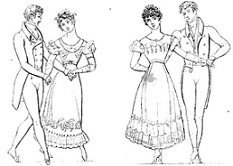
Figure 2. Dancing positions, 1830
The Promenade in Cotillion Dancing
The concept of a Promenade appears in many French Cotillions. In 1762 the Parisian writer De La Cuisse named the figure Les Courses, he rejected the alternative terms of Promenade and Procession. He described a figure in which the man leads the lady around the square set. He described several variations: the promenading couples may move one space around the set, two spaces, or all four spaces to return to where they started; they may turn into the set as they reach each couples' place, or not; they may perform rigadons at each quarter, or not2.
De La Cuisse wasn't specific about how the promenading couple should embrace, though the word translated as lead hinted that the couples join one hand as in Figure 1. Figure 3 shows a number of illustrations from De La Cuisse's book Le répertoire des bals3. They show that the progression can be clockwise or counter-clockwise and that the couples can turn either left into place or right.
The first writers I know of to describe the Cotillion Promenade in English are Messrs Gherardi and Gallini. I'm not able to link to Gherardi's 1768 A second book of Cotillons or French Country Dances but his descriptions were consistent with those of De La Cuisse. Gherardi did add one new detail, he wrote that the progressions around the Set may take either a curved route or go squareways .
Gallini described two promenading figures in detail c.1772:
-
In his Allemande Cotillion he described a promenading figure as
Each Lady with the Right hand behind, joins her Partner's Right, and each Gentleman with his Left hand behind, joins his Partner's Left; in this Position they must do the Course, but all turn and face each other at every Quarter 4. This description is consistent with De La Cuisse though the couples joined crossed hands behind their backs. Perhaps De La Cuisse and Gherardi intended this same Promenading embrace to be used in their dances, they didn't explicitly say.
-
In his La Precieuse he described a promenading figure as
The first Gentleman with his Left hand, takes his Partner by the Right, and puts his Right behind her while she puts her Left behind him; the this Couple do the same, and in that Position the first and third Couple Queue du Chat . It's unclear if the hands are joined behind them or not.
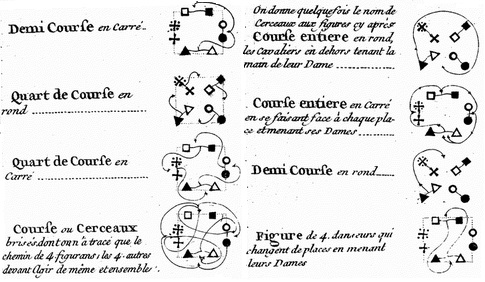
Figure 3. An assortment of Cotillion Promenading figures, De La Cuisse, 1762
Thomas Hurst writing in 1769 in his Cotillons Made Plain and Easy provided a different definition of the Promenade. He documented a simplified style of dancing, his book was aimed at social dancers rather than aristocratic or professional dancers. He wrote that: Every Gentleman takes his Partner by the Left-Hand, and putting his Right Hand round her Waist, in this manner they follow each other all round in a great Ring, and finish in their proper Places ; this form of promenading was documented for use as a Cotillion Change.
The Promenade in English Country Dancing (ECD)
The first English Country Dance I know of that uses the word Promenade is the 1776 Fete Champetre from Thompson's Twenty Four Country Dances for the Year 1776. The figures provided for this dance include: the 1st 2nd & 3rd Cu Promenade quite round 5. This figure was described in 1808 by Thomas Wilson as: The Lady and Gentleman ... cross hands; that is, the Gentleman takes the right and left hands of the Lady with his right and left hands, the second and third couple do the same, then the whole three couple pass round ...to their places 6. This Promenading figure is essentially the same as that from the Cotillion dances, just adapted to a Country Dance. Figure 5 shows a later description of this same figure.
Use of the word Promenade in an English Country Dance became common over the following decade, many dances of the 1780s feature the term. The figure was older however, it had previously been known by another name; the anonymous A.D. writer in 1764 described a figure named Leading Arm-in arm. A.D. wrote there are two ways to do this; the proper way was to hook elbows with your partner, but the modern way is, putting each their furthest off-arms behind their back, viz the man's left and woman's right; and crossing their nearest arms behind, the man taking the woman's right hand in his, and the woman taking the man's left hand in hers 7 (see Figure 4). This precisely matches one of the two embraces described by Gallini - it's a promenade without using the word promenade .
An anonymous writer with the initials F.P. (possibly Francis Peacock) published a description of a new dance form in 1772 in the third volume of The Lady's Magazine; this new dance was a hybrid country dance which incorporated elements of cotillion dancing, it also described a forward moving allemande figure: When they have to go forward, if the lady be on the right of the gentleman, he with his right-hand receives her right-hand behind her, and she his left behind him; but when the lady is on the left of the gentleman, he with his left receives her left, and with his right her right also behind. . This appears to be the same hands-behind promenade figure we've seen from both the A.D. writer and from Gallini, only it's described as an allemande (a term that can describe a whole family of related figures, the promenade might even be thought of as a form of allemande embrace).
A further naming variation appears in a 1775 dance named La Ballet Hollandoise in the Straight and Skillern collection. This dance says Cast off 3 Cu. all round into their places 8. This cast off three couple figure could involve a promenading embrace. A 1787 Thompson dance named The Romp contains the instruction the 1st couple go round with the allemand till they come to their places again, the 2nd and 3rd couples follow . This hints at a promenading figure with an allemande embrace, presumably with crossed hands joined behind the dancers' backs.
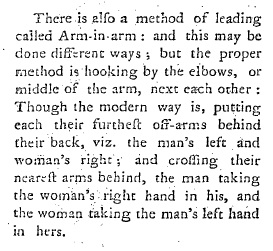
Figure 4. Leading Arm-in-arm, 1764
A.D.'s modern figure may have been new in 1764 but it was old by the 19th Century. Thomas Wilson writing c.1820 boasted that he was personally responsible for a new innovation - he encouraged hands to be crossed before the promenading couple rather than behind; he added that the right hand must be placed uppermost 9 (see Figure 5). He named this figure Promenade Three Couple6 in 1808 but by c.1820 he'd simplified it to Promenade9. He explained in a footnote The old method of promenading was, by the Lady and Gentleman crossing their hands behind their backs, which, if not well performed, produces an inelegant effect, and is much more laborious, and less graceful, than the above method, which the author introduced some years ago, and is now generally followed . If the arms are crossed in front of the dancers then they should be held at approximately waist height (see Figure 2) with the lady's arms above those of the man; I've heard it suggested that the man should be supporting the lady (in case she should swoon in the dance), that may have been so but the convention also addressed a more immediate matter of anatomical concern: if the lady's arms are upper-most then she can ensure there are no awkward collisions!
It's impossible to verify whether Wilson's personal influence was responsible for this change, the new convention did catch on however. Carlo Blasis writing in 1830 provided an illustration of a Group, with the method of holding the hands while dancing 10 (see Figure 2). One of his images shows the Wilsonian promenade embrace; however, the image shows the couple poised to promenade down the set, rather than up. He also illustrated an embrace where the left hands are joined in front of the couple, and the right hands behind; I've not found this embrace described anywhere else.
Promenading at a Ball
Court balls of the 18th Century featured elegant couple-dances such as the Minuet, this tradition of two-person display dancing was still upheld in some ball rooms in the early 19th century. Wilson's c.1816 Companion to the Ball Room included music for a variety of Minuets and Allemandes, Wilson continued to write that the most fashionable and proper dance to open a Ball with is a Minuet 11 as late as 1822.
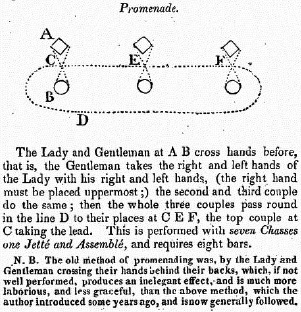
Figure 5. Thomas Wilson's Promenade, c.1820
Two footnotes in Companion to the Ball Room offer an interesting hint. First Wilson apologised for having to include Marching music in his book: In a Companion to the Ball Room it is necessary to insert a few Marches for the purpose of Promenading to render the work complete 12 (my emphasis), and on the next page he tells us a March should always preceede the Waltzing . Promenading, in this context, implied the fashionable mingling of guests at a ball; promenading was often conducted in the open air and was accompanied by marching music. Whereas, the Regency Waltz was sometimes initiated by couples polonaise marching around a ball room; once the march was complete the couple waltz would begin. In so far as march music was used for promenading once could say that the polonaise march was a form of promenade , especially if the marching couples were invited to promenade through the state rooms of a palace. To further complicate matters, the term March sometimes described a prelude to a country dance in which dancers elegantly march around each other13.
The Dancing Master Edward Payne provided a detailed explanation for what he called the Promenade Step as used in Spanish Country Dancing (quoted from his 1818 Quadrille Dancer):
This step commences from the 1st or 3rd pos. with the *left foot before, you make a step forward with the left foot into the 4th pos. then bring the right up to the left, into the 1st pos. afterwards with the knees perfectly straight, rise on your toes and quickly let both heels fall to the floor, repeat the same with the right foot, then again with the left, and as often as the figure of the dance may require.
This step occupies One bar in 3/4 time, suppose the bar to contain three crotchets, the step forward answers to the first note, bringing the foot up behind to the second, and the rise and fall answers to the third crotchet, in 2/4 or 6/8 time, the step is performed in the same manner, the alteration that occurs must be regulated by the Ear.
(*) The lady always commences with the right foot before.
The Promenade in Quadrille Dancing
Several authorities wrote about the Promenade as a Quadrille Figure. Wilson wrote in 1818 of a Demi Promenade15 and Queue du Chat16, he used similar terminology as the Cotillion writers 50 years earlier: it is performed by the opposite Couples moving in a half circle round to and taking each other's situation (see Figure 6). He also wrote of a Double Promenade17 which is the same, but the side couples cross after the head couples have crossed; then both cross back; and a Grande Promenade15, which involves all four couples following each other in a circle (see Figure 6).
The Scottish dance master Alexander Strathy provided a similar description of the Demi Promenade in 182218. He described the embrace as The Gentleman receive in their right hand the right hand of their Ladies, and in their left the left hand, raising the arms a little, and holding them rounded .
The 1817 American writer V.G. provided a translation of an 1811 French work by J. H. Gourdoux-Daux. His description of the Half Promenade is similar to that of Wilson and Strathy, but he added: to perform this trait, two gentlemen of the opposite couples will give their left hand to their partners; (if they choose, they may also give right hand beneath the left) 19. He preferred the single handed Promenade figure from Figure 1. It appears that the single handed Promenade was more popular in France, and that V.G. and Wilson differ on which arm should be uppermost in the two-handed variant.
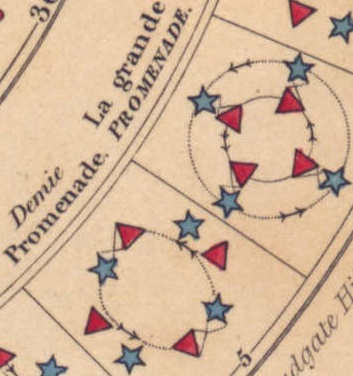
Figure 6. Wilson's Quadrille Promenade figures, 1818
Carlo Blasis also described the Demi-Queue du Chat figure in 1830, he said Each person of two couple presents the left hand, and goes off obliquely to the right, in order to change places 20. He recommended the same single handed left-in-left promenade figure as V.G..
Our Policy for Promenade Figures
We here at RegencyDances.org rarely specify the specific Promenade embrace to use. It's generally assumed that a Wilsonian two-handed arms-in-front Promenade is most suitable for a Regency Ball Room, but you're welcome to use one of the other embraces if you prefer. If you're dancing an older 18th Century dance you may wish to use the arms-behind figure of A.D. and Gallini, if you wish to add some French quadrilling elegance perhaps use the single handed Promenade figure of V.G. and Blasis.
Finally, if
you're reading this and know about some clues that we've missed,
please do get in touch. We'd love for further evidence to be found!
References
1. Marque, 1821, Étrennes à Terpsichore (page 42)
2. De La Cuisse, 1762, Le répertoire des bals
3. De La Cuisse, 1762, Le répertoire des bals
4. Gallini, c.1772, Allemande Cotillion
5. Thompsons, Twenty Four Country Dances for the Year 1776
6. Wilson, 1808, An
Analysis of Country Dancing
7. A.D. 1764 Country-Dancing made Plain and Easy
8. Skillern & Straight, 1775, La Ballet Hollandoise
9. Wilson, c.1820, Complete
System of English Country Dancing
10. Blasis, 1830, The code of Terpsichore
11. Wilson, 1822, An Analysis of Country Dancing, 4th Edition
12. Wilson, c.1816 The Companion to the Ball Room
13. Wilson, c.1820, Complete
System of English Country Dancing
14. Wilson, 1822, The Quadrille & Cotillion Panorama
15. Wilson, 1818, The Quadrille & Cotillion Panorama
16. Wilson, 1818, The Quadrille & Cotillion Panorama
17. Wilson, 1818, The Quadrille & Cotillion Panorama
18. Strathy, 1822, Elements of the Art of Dancing
19. V.G., 1817, Elements and Principles of the Art of Dancing
20. Blasis, 1830, The Code of Terpsichore
| 
